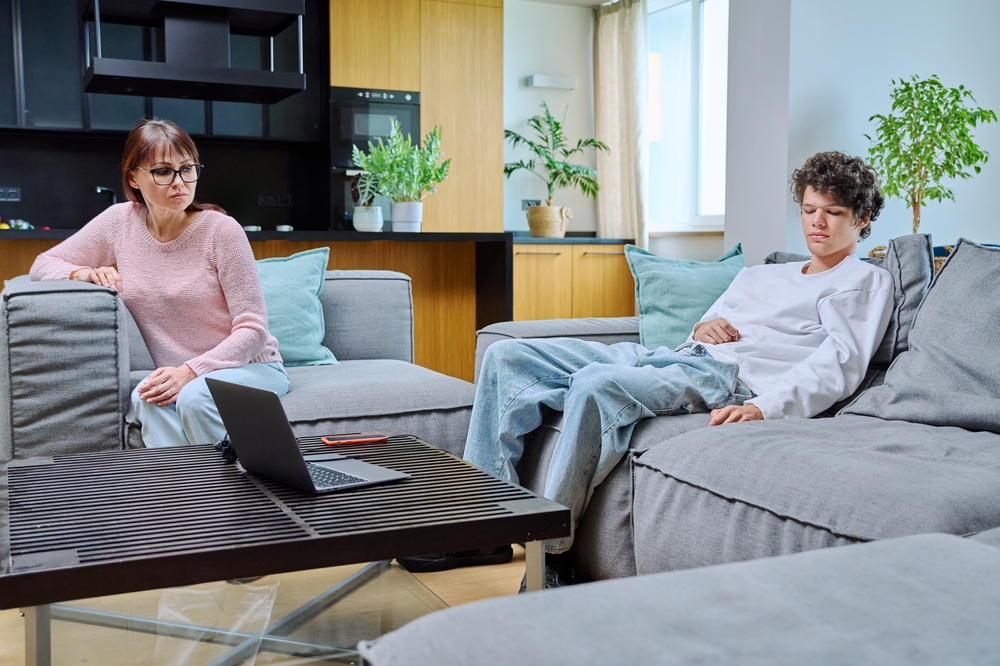In today’s digital landscape, cutting through screen time is not just a challenge; ditching the screen and fostering balanced and thriving lives is necessary.
Gen Z is the first generation to have early access to social media. They may be the most vulnerable to social media addiction among today’s adults.
The average American child watches television for three hours per day and may spend five to seven total screen hours, totaling seven. Due to our increasing screen time, it may be no surprise that much of our physical movement is replaced with more sedentary activities.
But what are the long-term repercussions for your teen’s well-being and mental health when they spend too much time glued to screens?
What is Screen Time?
Screen time refers to how much time your child spends using devices with screens, including television viewing, browsing the internet, using cell phones, or playing video games.
Warning Signs of Screen Addiction
Here are five warning signs of excessive screen time to be aware of:
Losing interest in other activities
One important symptom is when your teen begins to lose interest in things he used to like, and it takes over his time completely. For example, a youngster who used to enjoy playing basketball outside suddenly refuses to leave his room. He just discovered a live gaming streaming site and now spends most of his time playing video games and watching other people (typically older men) play video games.
Using screens as a mood-booster
How can you not adore TikTok? There’s something for everyone, from comical pets to dancing babies to celebs sharing their dazzling ‘A Day in My Life’ reels. It’s no surprise that people keep returning. But what is too much?
If your teenager turns to a screen for a “mood boost” or as a source of comfort when feeling down, it may indicate excessive reliance.
Sneaky activity
Have you discovered them engrossed in their phones or devices after bedtime or when they should be reading or studying? This behavior could be a sign of an unhealthy attachment to screens.
Screens are interfering with relationships
Whether it’s with family, friends, or even romantic relationships, spending too much time online can cause lasting damage to a teen’s sense of self.
They experience withdrawal
If separating a teen from their gadget always ends in a fight, it may be indicative of withdrawal symptoms.
Screen Time and Mental Health
Cortisol, a stress hormone, plays a crucial role in pediatric studies. Both low and high cortisol levels are linked to poor performance. Cortisol levels are typically lowest at night, rise as wake-up time approaches, and spike upon waking.
Excessive daily screen time (up to three hours) for school-aged children can reduce the morning cortisol surge, which is harmful. In contrast, limiting screen time to under three hours or having no digital media exposure helps maintain a healthy morning cortisol increase.
An overuse of screen time may result in depression, anxiety, and brain fog; being unable to regulate consumption of media; cyberbullying and harassment; suicide tendencies; and self-isolation. Even FOMO (fear of missing out) may contribute to mental health decline.
Exposure to Harmful Content
Another reason you should limit and monitor your children’s use of the internet and technology is their exposure to harmful content, including sexual or pornographic material, drug and alcohol usage advice, and learning how to use them themselves. Teens can quickly pick up this damaging information in their behaviors.
Parenting requires you to stay up-to-date on what your children are up to online. There is software available that enables parents to track their child’s activities on the Internet; using it, you can see who they communicate with online – through calls, texts, or emails. You should ensure you use only quality programs for this task.
How Much Screen Time Should I Aim For With My Teenager?
The World Health Organization (WHO) gives clear screen time guidelines for kids under 4, considering physical activity and sleep; however, for children aged five and older and adults, the WHO focuses on physical activity without specific screen time guidelines. This becomes complex for school-aged children because screens are integral to formal education.
This becomes a more intricate issue for school-aged children as screens are increasingly integrated into formal education settings. Therefore, educators must emphasize limiting screen use solely for recreational purposes.
WHO offers the following physical activity guidelines for children aged 5 to 17:
- Aim for 60 minutes of moderate-to-vigorous-intensity aerobic physical activity daily throughout the week.
- Incorporate vigorous-intensity aerobic activities and exercises that enhance muscle and bone strength at least three days a week.
- 3. Cautiously restrict the time spent on sedentary activities, especially recreational screen time.
What Strategies Can Be Employed To Manage Screen Time Effectively?
Engage in a conversation with your teenager about implementing screen timers. This can be easily configured in digital device settings and tailored to restrict access to specific apps after designated durations or during particular times of the day, helping your teen establish their limits.
Lead by example when it comes to screen time. Set your timers and monitor your screen habits. There is a significant correlation between parental screen time and their children’s.
Strive to establish screen-free periods within the family’s daily routine, such as during meal times, and designate screen-free zones within the home, like the dinner table and, whenever possible, teenagers’ bedrooms.
Bottom Line
While technology offers vast opportunities for interaction, engagement, and connection, caution is imperative when integrating it into our lives. The reality of screen addiction and its potential impact on your teen’s long-term mental health cannot be ignored.
If your teen’s screen time interferes with daily activities, hinders social development, or isolates them from others, immediately consult a pediatrician. HelpYourTeenNow can provide confidential consultation and assistance in finding an appropriate treatment center for your teen.





0 Comments